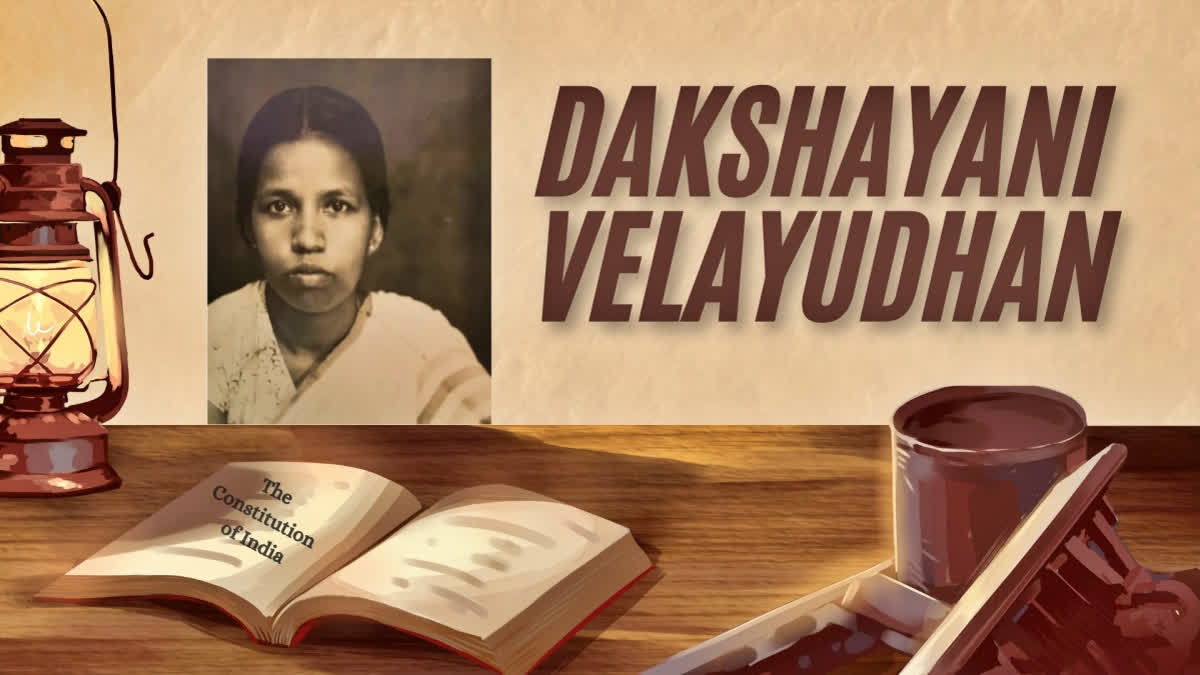History has a funny way of turning its eyes on the obvious heroes: those who shouted loudest, fought fiercest, or scribbled their names in the largest font. But sometimes, history misses the quiet revolutionaries, the ones who didn’t fit the hero mould. Dakshayani Velayudhan (the only Dalit woman in the Indian Constituent Assembly) is one of them.
Back in 1946, India was on the cusp of freedom, but that freedom wasn't going to be handed out like free candy. It was being bargained for, argued over, and chiseled into shape. Enter Dakshayani, the daughter of a Dalit farmer in Kerala, walking into the Constituent Assembly with her head held high. For context, this was an era when Dalit women weren’t supposed to walk anywhere, let alone into the halls of power. But there she was, a product of Mahatma Gandhi’s vision and Baba Ambedkar’s fire. She was determined not just to sit at the table but to pull up a chair for everyone else left out.
Contribution To The Constitution
Dakshayani wasn’t there for symbolic representation. No, she had work to do. She stood in a room full of upper-caste men and dared to speak about equality. She rejected separate electorates for Dalits, arguing instead for integration. “Separate electorates will only divide us,” she said in her speech in the assembly, insisting that India needed unity, not more divisions. She was clear-eyed about the danger of tokenism, knowing that real equality doesn’t come from handouts but from systemic change.
Let’s talk about the grit it took. This wasn’t just a woman navigating a male-dominated space. This was a Dalit woman stepping into a space dominated by caste privilege. Imagine the courage required to talk about untouchability when untouchables weren’t even supposed to share the same water source. And yet, Dakshayani confronted, she argued, and she dared to dream of a Constitution that wouldn’t just promise equality but would demand it.
Dakshayani also worked to ensure that untouchability was abolished, pressing for it to be not just discouraged but made unconstitutional. She drew from her own experiences as a Dalit woman to highlight the struggles of marginalized communities and pushed for provisions that would guarantee social justice and dignity for all. Through her efforts, fundamental rights like equality, non-discrimination, and social justice became integral to the Constitution of India.
The Revolution Continued
But Dakshayani’s story doesn’t end with her speeches. After the Constitution was drafted and India became a republic, she returned to Kerala, where she continued to fight for social justice. Her work in education and social reform was transformative. She understood that revolution doesn’t always look like a storm. Sometimes, it’s the steady drip of water carving a path through stone.
Flash forward to 2025. Women in Indian politics have come far, but have they come far enough? We have women in Parliament, women running states, and women in the Supreme Court. But for every woman who rises to power, there are millions still silenced by the weight of tradition and inequality. Representation is just the first step, and the real work lies in reshaping the systems that hold us back.
As we celebrate Republic Day 2025, let’s not just remember the heroes carved into our textbooks. Let’s also remember the ones like Dakshayani, who carved a place for themselves in history by refusing to accept the roles they were given. Her legacy isn’t just a footnote in the story of India’s independence, it’s a challenge to every generation that follows. Be bold. Be relentless. And most importantly, be unafraid to walk into history, even if you have to kick the door open yourself.
Read more:



